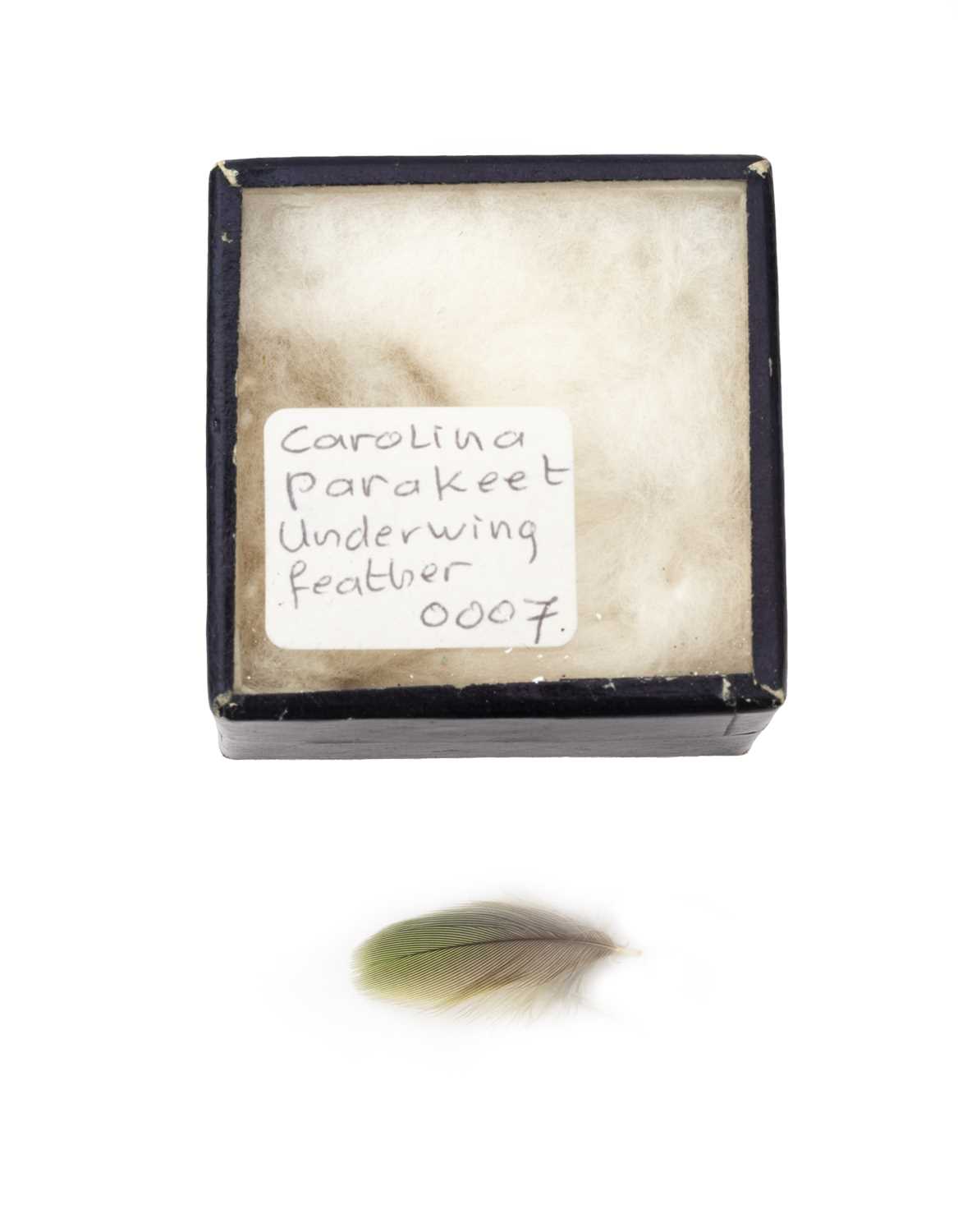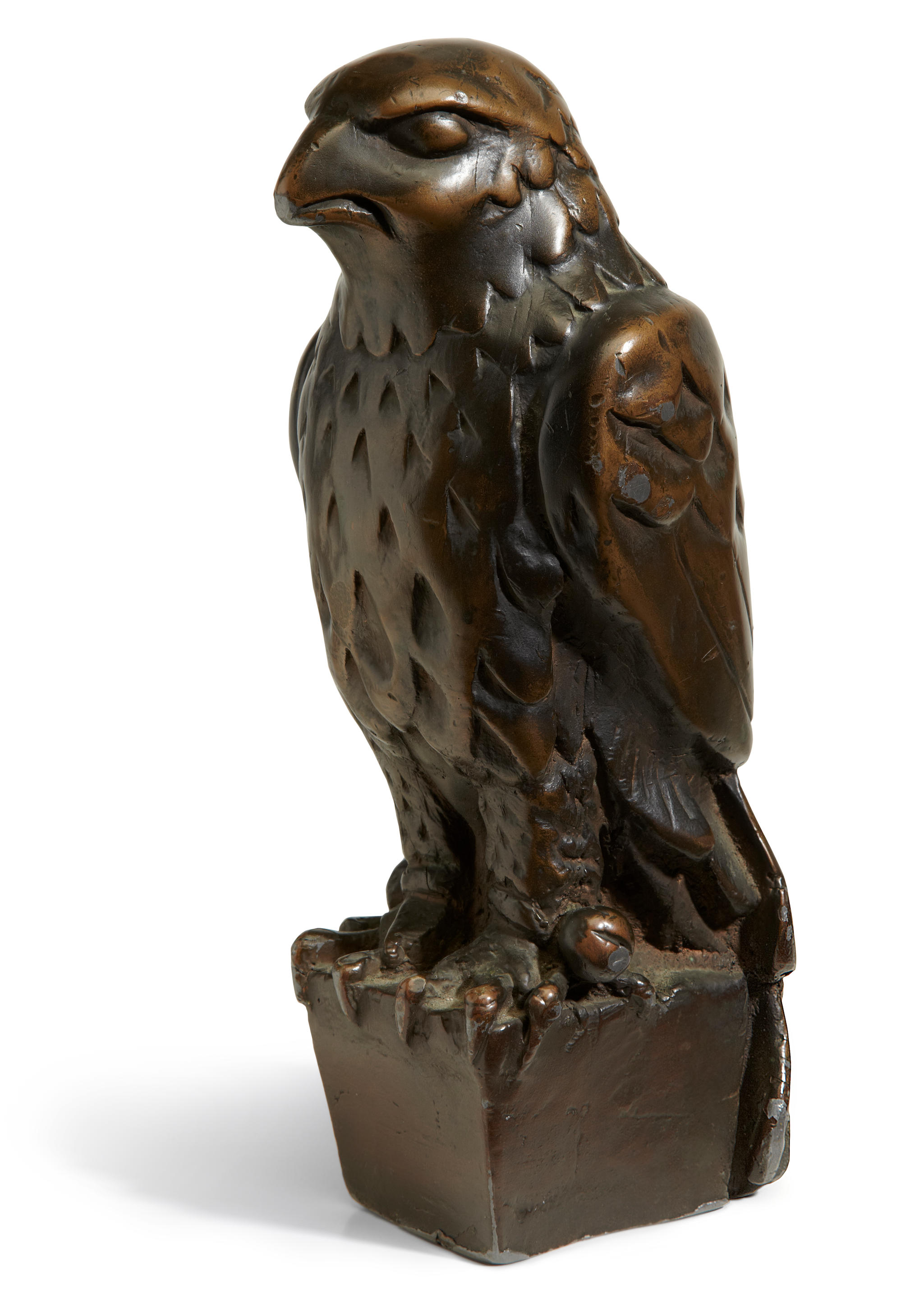A FEATHER OF THE EXTINCT CAROLINA PARAKEET (CONUROPSIS CAROLINENSIS)
a feather from the chest area, the bird extinct since 1918, in a cardboard display box, together with a certificate of authenticity recently prepared by Errol Fuller, with a photograph of the feather on the reverse,
the feather 2.1cm in length
This was the only species of parrot endemic to North America, and it originally ranged across the eastern, Midwest and plains states. Curiously its flesh may have been poisonous as cats apparently died from eating them, possibly because the birds used to eat the toxic seeds of cockleburs. This parakeet lived in huge, noisy flocks of as many as 200–300 individuals and possibly became extinct due to deforestation of its habitat. The last known specimen perished in captivity at the Cincinnati Zoo in 1918.
Errol Fuller is the author of the following:
Extinct Birds, Oxford University Press, 2000
The Great Auk, Abrams, New York, 1999,
Dodo, Harper Collins, 2002,
The Passenger Pigeon, Princeton University Press, 2014,
Lost Animals, Princeton University Press, 2013.
This was the only species of parrot endemic to North America, and it originally ranged across the eastern, Midwest and plains states. Curiously its flesh may have been poisonous as cats apparently died from eating them, possibly because the birds used to eat the toxic seeds of cockleburs. This parakeet lived in huge, noisy flocks of as many as 200–300 individuals and possibly became extinct due to deforestation of its habitat. The last known specimen perished in captivity at the Cincinnati Zoo in 1918.
A FEATHER OF THE EXTINCT CAROLINA PARAKEET (CONUROPSIS CAROLINENSIS)
a feather from the chest area, the bird extinct since 1918, in a cardboard display box, together with a certificate of authenticity recently prepared by Errol Fuller, with a photograph of the feather on the reverse,
the feather 2.1cm in length
This was the only species of parrot endemic to North America, and it originally ranged across the eastern, Midwest and plains states. Curiously its flesh may have been poisonous as cats apparently died from eating them, possibly because the birds used to eat the toxic seeds of cockleburs. This parakeet lived in huge, noisy flocks of as many as 200–300 individuals and possibly became extinct due to deforestation of its habitat. The last known specimen perished in captivity at the Cincinnati Zoo in 1918.
Errol Fuller is the author of the following:
Extinct Birds, Oxford University Press, 2000
The Great Auk, Abrams, New York, 1999,
Dodo, Harper Collins, 2002,
The Passenger Pigeon, Princeton University Press, 2014,
Lost Animals, Princeton University Press, 2013.
This was the only species of parrot endemic to North America, and it originally ranged across the eastern, Midwest and plains states. Curiously its flesh may have been poisonous as cats apparently died from eating them, possibly because the birds used to eat the toxic seeds of cockleburs. This parakeet lived in huge, noisy flocks of as many as 200–300 individuals and possibly became extinct due to deforestation of its habitat. The last known specimen perished in captivity at the Cincinnati Zoo in 1918.















Try LotSearch and its premium features for 7 days - without any costs!
Be notified automatically about new items in upcoming auctions.
Create an alert